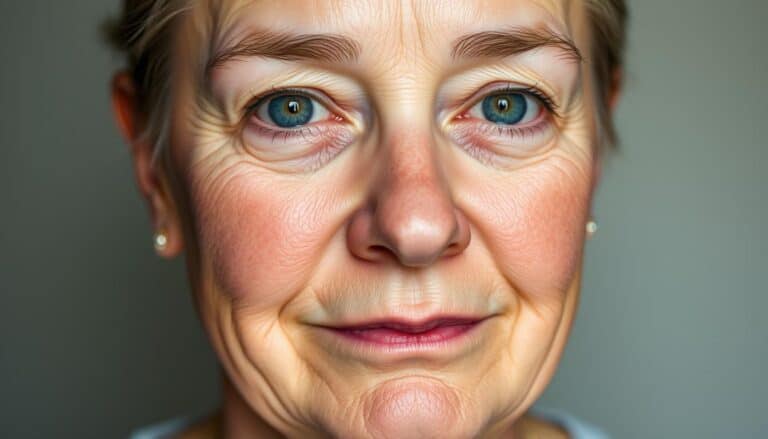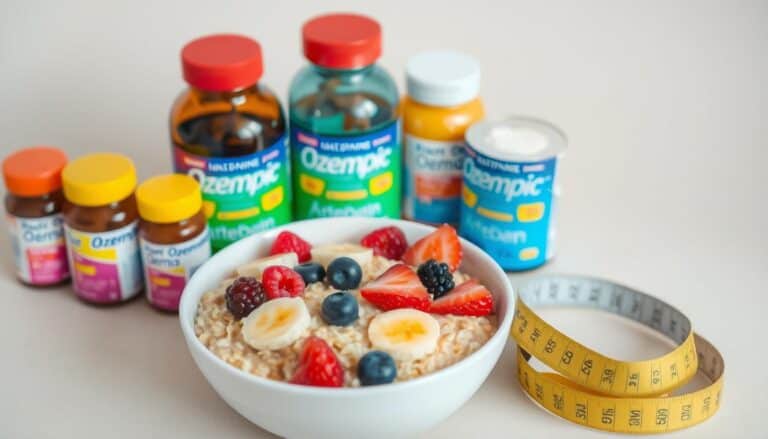The Science of Fat Loss Understanding How Your Body Burns Fat
Have you ever wondered how your body burns fat? The process of fat loss is a complex yet fascinating journey that takes place within your body. In this article, we will delve deep into the science behind fat loss, shedding light on the mechanisms that enable your body to shed those extra pounds.

The Basics of Fat
Fat, scientifically referred to as adipose tissue, is a fundamental component of the human body. While it’s often associated with excess weight and the desire to shed pounds, it’s important to recognize that fat serves several vital functions within your body.
Energy Storage: One of the primary roles of fat is to serve as a reservoir for energy. When you consume more calories than your body needs for immediate energy expenditure, the excess calories are converted into fat and stored for future use. This stored fat acts as a backup energy source, ensuring your body has a readily available supply of energy when needed. It’s akin to a savings account for energy, allowing you to sustain yourself during periods of reduced calorie intake, such as when you’re fasting or engaging in strenuous physical activity.
Insulation: Fat also acts as a natural insulator for your body. Subcutaneous fat, which is located just beneath your skin, provides a layer of insulation that helps regulate your body temperature. It acts as a thermal barrier, preserving heat and preventing excessive heat loss, especially in colder environments. Without this insulating layer, your body would be more susceptible to temperature fluctuations.
Types of Fat: Not all fat is created equal. There are different types of fat found in your body, each with distinct properties and functions. Two common types are:
- Subcutaneous Fat: This type of fat is located directly beneath the skin and is responsible for the softness and pliability of your skin. It serves as a cushioning layer, protecting underlying tissues and organs from external forces. Subcutaneous fat also contributes to your overall body shape.
- Visceral Fat: Visceral fat, on the other hand, is found deeper within your body, surrounding vital organs such as the heart, liver, and intestines. Unlike subcutaneous fat, visceral fat is metabolically active and can release hormones and inflammatory substances. Excess visceral fat is associated with an increased risk of various health problems, including cardiovascular disease and type 2 diabetes. Understanding the distinction between these two types of fat is essential for assessing your health and wellness.
Fat is not just an unwanted component of your body but a crucial one. It serves as an energy reserve, provides insulation, and consists of different types with distinct roles. While managing excess fat is essential for maintaining optimal health, it’s equally important to recognize that some level of fat is necessary for the proper functioning of your body.
How Your Body Stores Fat
When you consume more calories than your body needs for its immediate energy requirements, a remarkable process occurs within your body—it begins to store the excess energy as fat. This process is vital for your survival and has evolved over thousands of years to ensure that you have access to energy during times of scarcity.
Caloric Surplus: Fat storage begins when you consume a surplus of calories, which are units of energy derived from the food you eat. These excess calories can come from carbohydrates, fats, or proteins, but they are primarily stored in the form of fat.
Adipose Tissue: The storage of fat primarily takes place within a specialized connective tissue known as adipose tissue. Adipose tissue is found throughout your body, with significant deposits located under the skin (subcutaneous fat) and around vital organs (visceral fat).
Fat Cells (Adipocytes): Within adipose tissue, you’ll find specialized cells called adipocytes. These cells are responsible for storing and releasing fat as needed. When you consume more calories than you burn, adipocytes increase in size as they accumulate triglycerides—a type of fat molecule.
Triglycerides: Triglycerides are the most common form of fat storage in your body. They consist of three fatty acids bound to a glycerol molecule. When you eat, your body breaks down dietary fats into fatty acids and glycerol, and these components are then reassembled into triglycerides within adipocytes.
Insulin’s Role: The hormone insulin plays a crucial role in fat storage. After a meal, especially one high in carbohydrates, your blood sugar levels rise. In response, your pancreas releases insulin to facilitate the uptake of glucose (sugar) into cells for energy. However, insulin also promotes the storage of excess glucose as fat in adipose tissue. This is why diets high in refined carbohydrates can contribute to fat storage.
Fat Storage Locations: As mentioned earlier, your body stores fat in two primary locations:
- Subcutaneous Fat: This type of fat is stored just beneath your skin and is the fat you can pinch and feel. Subcutaneous fat acts as a thermal insulator and provides padding and protection to your body.
- Visceral Fat: Visceral fat surrounds and cushions your internal organs. Unlike subcutaneous fat, visceral fat is metabolically active and can release inflammatory substances, which can contribute to health problems when present in excess.
Understanding how your body stores fat is essential when embarking on a fat loss journey. To burn stored fat, you need to create a caloric deficit by consuming fewer calories than you expend through daily activities and exercise. This deficit signals your body to release stored fat from adipose tissue, where it can be used for energy, ultimately leading to fat loss.

Metabolism and Fat Burning
Metabolism is the intricate network of chemical processes that take place within your body to maintain life. These processes involve the conversion of food into energy, the building and repair of tissues, and the removal of waste products. Your metabolism operates 24/7, even when you’re at rest, as it supports vital functions like breathing, circulating blood, and regulating body temperature.
When it comes to fat burning, metabolism plays a pivotal role. Here’s how your metabolic rate impacts your ability to burn fat effectively:
Basal Metabolic Rate (BMR): Your BMR represents the number of calories your body requires to perform basic functions at rest, such as breathing and maintaining body temperature. It accounts for the majority of your daily energy expenditure, usually around 60-75% of total calorie usage. People with a higher BMR tend to burn more calories and fat even when they’re not physically active.
Physical Activity: The energy you expend through physical activities like walking, exercising, or any form of movement contributes to your overall metabolic rate. When you engage in physical activity, your body requires additional calories to fuel those movements. Regular exercise can increase your metabolic rate, making it easier to burn fat.
Thermic Effect of Food (TEF): The process of digesting, absorbing, and storing the nutrients from the food you eat requires energy. This is known as the thermic effect of food. Different foods have varying TEF values, with protein having the highest. Consuming a balanced diet with adequate protein can slightly boost your metabolism.
Hormones and Fat Storage: Hormones, such as insulin and thyroid hormones, influence your metabolic rate and how your body stores or burns fat. For example, insulin promotes fat storage, while thyroid hormones can increase your metabolic rate and enhance fat burning. Hormonal imbalances can impact your ability to lose fat effectively.
Muscle Mass: Muscle tissue is more metabolically active than fat tissue. This means that individuals with a higher proportion of muscle tend to have a faster metabolism and can burn more fat. Resistance training and strength-building exercises can help increase muscle mass and boost your metabolic rate.
Aging and Metabolism: As you age, your metabolism naturally tends to slow down. This can make it more challenging to burn fat, as you may require fewer calories to maintain your body weight. To counteract this, maintaining an active lifestyle and a healthy diet becomes even more critical as you get older.
Metabolism is the engine that drives fat burning within your body. Your metabolic rate is influenced by various factors, including genetics, age, activity level, and hormonal balance. Understanding how metabolism works can empower you to make informed choices about your diet and exercise routine, helping you optimize your body’s ability to burn fat effectively.
Calories and Fat Loss
Calories serve as the foundation of the fat loss equation. Achieving a caloric deficit is fundamental to successful fat loss, and understanding how calorie intake influences your journey towards shedding excess fat is crucial.
Caloric Deficit Explained: A caloric deficit occurs when you consume fewer calories than your body expends in a day. This deficit forces your body to tap into its energy reserves, which include stored fat, to meet its energy needs. In other words, when you consistently consume fewer calories than you burn, your body starts using its fat stores for energy, resulting in fat loss.
Calories as Energy: Calories are units of energy derived from the food you eat. Your body needs a certain number of calories to perform its basic functions, such as maintaining body temperature, supporting organ function, and carrying out daily activities. Any excess calories beyond what your body requires for these functions are stored as fat.
Determining Your Caloric Needs: To embark on a successful fat loss journey, it’s essential to understand your daily caloric needs. This can vary significantly from person to person and is influenced by factors such as age, gender, weight, activity level, and metabolism.
- Basal Metabolic Rate (BMR): Your BMR represents the number of calories your body needs to maintain basic functions at rest. It’s the foundation of your daily caloric expenditure.
- Physical Activity: The calories you burn through physical activities and exercise add to your total daily energy expenditure. More active individuals naturally burn more calories.
- Thermic Effect of Food (TEF): The energy required for digesting and processing the food you eat also contributes to your calorie expenditure. Different macronutrients (carbohydrates, fats, proteins) have varying TEF values.
Creating a Caloric Deficit: To promote fat loss, you must consume fewer calories than you burn. This can be achieved through a combination of dietary changes and increased physical activity. Here are some strategies:
- Dietary Modifications: Reducing portion sizes, choosing nutrient-dense foods, and monitoring your calorie intake can help create a caloric deficit.
- Exercise: Engaging in regular physical activity increases your calorie expenditure, making it easier to maintain a caloric deficit.
- Balanced Diet: Focus on a balanced diet that includes a variety of foods to ensure you get essential nutrients while managing calorie intake.
- Mindful Eating: Pay attention to hunger cues and avoid mindless eating, which can lead to overconsumption of calories.
- Tracking Calories: Many people find success in fat loss by tracking their calorie intake using apps or journals.
It’s important to note that while creating a caloric deficit is essential for fat loss, extreme calorie restriction can have negative effects on your health and metabolism. It’s crucial to strike a balance between a reasonable calorie deficit and sustainable dietary habits to achieve long-term success in your fat loss journey.
Calories are the currency of energy in your body, and achieving a caloric deficit by consuming fewer calories than you burn is the key to fat loss. Understanding your individual caloric needs and adopting a balanced approach to calorie management is essential for achieving your fat loss goals in a healthy and sustainable manner.

Exercise and Fat Burn
Physical activity is a cornerstone of any effective fat loss plan. Engaging in regular exercise not only burns calories but also enhances your body’s ability to shed fat and improve overall fitness. Let’s explore the types of exercises that are most effective for burning fat and achieving your fitness goals.
Types of Exercises for Fat Burn:
- Cardiovascular Exercises (Cardio): Cardio workouts are renowned for their fat-burning benefits. They involve continuous, rhythmic movements that elevate your heart rate and increase your breathing rate. Popular forms of cardio exercises include running, jogging, cycling, swimming, and brisk walking. Cardio workouts are highly effective for burning calories during the activity and for promoting fat loss when done consistently.
- High-Intensity Interval Training (HIIT): HIIT is a workout strategy that alternates short bursts of intense exercise with brief periods of rest or lower-intensity activity. This approach is incredibly effective for fat burn as it elevates your heart rate, boosts metabolism, and continues to burn calories even after the workout is over. HIIT workouts can include exercises like sprinting, jumping jacks, and burpees.
- Strength Training: While cardio exercises burn calories during the activity, strength training, also known as resistance training, builds muscle. Muscles are metabolically active tissue, meaning they burn calories even at rest. By increasing your muscle mass through strength training exercises such as weightlifting, you can boost your metabolism and enhance fat burning over the long term.
- Compound Movements: Compound exercises engage multiple muscle groups simultaneously. They are effective for increasing muscle strength and burning calories efficiently. Examples of compound movements include squats, deadlifts, bench presses, and pull-ups.
- Circuit Training: Circuit training combines strength and cardio exercises in a structured, high-intensity format. It involves moving from one exercise to the next with minimal rest in between. This approach can provide a comprehensive workout that targets both fat burn and muscle building.
- Yoga and Pilates: While not as calorie-burning intensive as some other forms of exercise, yoga and Pilates offer numerous benefits for fat loss and overall well-being. They promote flexibility, core strength, and mindfulness, which can contribute to healthier eating habits and stress reduction, factors that are important for fat loss.
Factors to Consider:
- Frequency: Consistency is key. Aim for at least 150 minutes of moderate-intensity aerobic activity or 75 minutes of vigorous-intensity aerobic activity per week, along with muscle-strengthening activities on two or more days per week.
- Intensity: To maximize fat burn, incorporate both moderate and high-intensity workouts into your routine. High-intensity workouts can be shorter in duration but are effective at burning calories and fat.
- Variety: Mix up your workouts to prevent boredom and plateaus. Incorporating a variety of exercises keeps your body challenged and promotes overall fitness.
- Balanced Diet: Remember that exercise alone is not a magic solution for fat loss. Pair your workouts with a balanced diet to optimize results. Nutrition plays a significant role in achieving and maintaining a healthy body composition.
Exercise is a powerful tool for fat burn and improving overall fitness. Combining cardio, strength training, and a variety of exercises can help you achieve your fat loss goals while enhancing your physical well-being. Consistency and a balanced approach to exercise are key to long-term success.

Diet and Fat Loss
The saying “you are what you eat” holds true when it comes to fat loss. Your dietary choices play a fundamental role in achieving and maintaining a healthy body composition. Let’s delve into the importance of a balanced diet and identify foods that can support your fat loss goals.
Balanced Diet for Fat Loss:
- Caloric Control: As mentioned earlier, creating a caloric deficit is paramount for fat loss. This means consuming fewer calories than you expend. However, it’s equally essential to maintain a balanced diet that provides the necessary nutrients for overall health while managing calorie intake.
- Protein: Protein is a crucial component of a fat loss diet. It helps preserve muscle mass while promoting the feeling of fullness. Foods rich in protein include lean meats, poultry, fish, eggs, dairy products, legumes, and tofu.
- Fiber: Fiber aids in digestion and helps you feel satisfied, reducing the urge to overeat. Incorporate plenty of fruits, vegetables, whole grains, and legumes into your diet to increase your fiber intake.
- Healthy Fats: Not all fats are detrimental. Healthy fats, such as those found in avocados, nuts, seeds, and olive oil, are essential for various bodily functions. They also help keep you full and satisfied.
- Complex Carbohydrates: Choose complex carbohydrates over simple sugars. Whole grains like brown rice, quinoa, and oats provide sustained energy and are more filling than refined carbohydrates.
- Hydration: Staying adequately hydrated is crucial for overall health and can aid in appetite control. Drinking water before meals can help reduce calorie intake.
- Portion Control: Be mindful of portion sizes. Eating smaller, balanced meals throughout the day can help regulate blood sugar levels and prevent overeating.
Foods That Aid in Fat Loss:
- Lean Protein Sources: Foods like chicken breast, turkey, lean beef, and fish are rich in protein and can boost metabolism while preserving muscle mass.
- Leafy Greens: Vegetables like spinach, kale, and broccoli are low in calories but high in fiber and nutrients. They promote satiety and provide essential vitamins and minerals.
- Berries: Berries such as blueberries, strawberries, and raspberries are packed with antioxidants and fiber, making them a nutritious and satisfying snack.
- Nuts and Seeds: Almonds, walnuts, chia seeds, and flaxseeds are excellent sources of healthy fats, protein, and fiber. They can curb hunger and provide essential nutrients.
- Greek Yogurt: Greek yogurt is high in protein and can be a satisfying and nutritious addition to your diet. Opt for plain, low-fat varieties.
- Spices and Herbs: Some spices, like cayenne pepper and ginger, may boost metabolism and enhance fat burning. Additionally, using herbs and spices can add flavor to your meals without adding calories.
- Green Tea: Green tea contains compounds like catechins that may help with fat oxidation and weight management. Drinking green tea as part of a balanced diet can be beneficial.
Remember that no single food or miracle ingredient guarantees fat loss. A well-rounded diet that focuses on nutrient-dense foods, portion control, and calorie management is the key to success. It’s essential to consult with a healthcare or nutrition professional before making significant dietary changes to ensure they align with your specific health goals and needs.

The Science Behind Fat Burn
Fat burn, scientifically known as fat metabolism, is a complex and highly regulated process that takes place within your body. Understanding how fat is broken down and utilized as an energy source involves several key components.
1. Fat as an Energy Source: Fat is stored in adipose tissue throughout your body, serving as a reserve energy source. When your body needs energy, it turns to these fat stores for fuel. This process is crucial during periods of caloric deficit or increased energy demands, such as during exercise.
2. Lipolysis: The initial step in fat metabolism is called lipolysis. It’s the process by which stored fat is broken down into its constituent parts: fatty acids and glycerol. Hormones like adrenaline and noradrenaline, released during periods of physical activity or stress, stimulate lipolysis. These hormones bind to receptors on fat cells, signaling them to release stored triglycerides (the form in which fat is stored) into the bloodstream.
3. Fatty Acid Transport: Once released, fatty acids are transported through the bloodstream, bound to a protein called albumin. This allows them to travel to various tissues, including muscle cells, where they can be used for energy production.
4. Beta-Oxidation: Inside muscle cells, fatty acids undergo a process called beta-oxidation. During this step, fatty acids are broken down further into acetyl-CoA molecules, which can enter the citric acid cycle (Krebs cycle) within the mitochondria—the powerhouse of the cell. Here, acetyl-CoA is used in the production of adenosine triphosphate (ATP), the primary energy currency of the body.
5. Hormonal Regulation: Hormones play a critical role in regulating the rate of fat metabolism. Insulin, for example, promotes fat storage, while hormones like adrenaline and glucagon stimulate the release and breakdown of fat. Additionally, thyroid hormones can influence metabolic rate and the efficiency of fat burning.
6. Energy Balance: The rate at which your body burns fat depends on your energy balance. If you consume more calories than you burn, your body will prioritize using dietary calories for energy, and stored fat won’t be significantly tapped into. Conversely, when you create a caloric deficit, your body relies more on fat stores for energy, leading to fat loss.
7. Spot Reduction Myth: It’s important to note that you cannot selectively target fat from specific areas of your body through exercise or spot reduction. Fat loss occurs uniformly throughout the body as a result of a caloric deficit.
The science behind fat burn involves a series of intricate processes, from the release of stored fat (lipolysis) to the breakdown of fatty acids (beta-oxidation) and their conversion into usable energy. Hormones play a vital role in regulating this process, responding to the body’s energy needs and demands. Achieving fat loss requires maintaining a caloric deficit and engaging in physical activity to stimulate fat metabolism effectively.

Factors Affecting Fat Loss
Fat loss is not solely determined by diet and exercise; various factors can influence your ability to shed excess fat. Two significant factors are genetics and age, which can impact how your body stores and burns fat.
1. Genetics:
Genetics plays a substantial role in determining your body’s fat distribution and propensity to gain or lose fat. Here’s how genetics can affect fat loss:
- Fat Distribution: Some individuals are genetically predisposed to store fat in specific areas of their body. For example, some people may accumulate more fat around their abdominal region, while others store it in their hips and thighs.
- Metabolic Rate: Genetic factors can influence your basal metabolic rate (BMR), which is the number of calories your body burns at rest. Some people naturally have a higher BMR, making it easier for them to burn calories and lose fat.
- Hormonal Regulation: Genetics can also impact how your body responds to hormones that influence fat metabolism, such as insulin and thyroid hormones. Genetic variations may make it easier or more challenging to regulate these hormones effectively.
While genetics can play a role in your body’s fat storage and metabolism, it’s essential to remember that they don’t determine your fate. Regardless of your genetic predisposition, you can still achieve fat loss through lifestyle modifications, including a balanced diet and regular exercise.
2. Age:
Age is another factor that can influence fat loss, primarily due to changes in metabolism and muscle mass as you get older:
- Metabolic Rate: As you age, your metabolic rate naturally tends to slow down. This means that your body may burn fewer calories at rest, making it easier to gain weight if your calorie intake remains the same. To counteract this, you may need to adjust your diet and exercise routine to accommodate a slower metabolism.
- Muscle Mass: Muscle mass tends to decrease with age, a process known as sarcopenia. Muscle tissue burns more calories at rest than fat tissue, so a reduction in muscle mass can contribute to a slower metabolism. Engaging in strength training exercises can help preserve and even increase muscle mass as you age, which can aid in fat loss.
- Hormonal Changes: Hormonal changes that occur with age, such as declining levels of sex hormones (e.g., testosterone and estrogen), can also affect fat distribution and metabolism. These changes can make it more challenging to lose fat, especially in certain areas.
Overcoming Genetic and Age-Related Factors:
While you can’t change your genetics or halt the aging process, there are strategies to overcome these factors when it comes to fat loss:
- Lifestyle Modifications: Focus on a balanced diet and regular exercise to create a caloric deficit and promote fat loss, regardless of genetic predispositions or age-related changes.
- Strength Training: Incorporate strength training exercises into your routine to preserve or increase muscle mass, which can help boost your metabolism.
- Consistency: Fat loss takes time and consistent effort. Stay patient and persistent in your journey, making sustainable lifestyle changes that you can maintain in the long term.
- Consultation: If you’re facing specific challenges related to genetics or age, consider consulting with a healthcare professional or a registered dietitian who can provide personalized guidance.
Genetics and age can influence your ability to lose fat, but they don’t have to be insurmountable obstacles. By adopting a balanced and consistent approach to diet and exercise, you can still achieve your fat loss goals and maintain a healthy body composition as you age.

Myths and Misconceptions About Fat Loss
Myth 1: Spot Reduction Works
One of the most prevalent myths is that you can target fat loss from specific areas of your body through exercises focused on those areas (spot reduction). In reality, fat loss occurs uniformly throughout the body, not just in the area being exercised. To lose fat from a specific area, you need to create an overall caloric deficit through diet and exercise.
Myth 2: Crash Diets Are Effective
Crash diets or extreme calorie restrictions may lead to rapid initial weight loss, but they are not sustainable and can be harmful to your health. They often result in muscle loss and a decrease in metabolism. Sustainable fat loss is achieved through gradual, long-term changes in diet and exercise habits.
Myth 3: Cardio Is the Only Way to Burn Fat
While cardiovascular exercise is excellent for burning calories and improving cardiovascular health, it’s not the only way to burn fat. Strength training and resistance exercises also contribute to fat loss by increasing muscle mass, which elevates your resting metabolic rate.
Myth 4: Eating Fat Makes You Fat
Not all fats are created equal. Healthy fats, such as those found in avocados, nuts, and olive oil, are essential for overall health and can actually support fat loss. It’s the excessive consumption of calories, regardless of the source, that leads to weight gain.
Myth 5: Skipping Meals Helps with Fat Loss
Skipping meals or severely restricting your calorie intake can slow down your metabolism and lead to muscle loss. It’s essential to eat regular, balanced meals to maintain a healthy metabolic rate and support sustainable fat loss.
Myth 6: Weight Loss Supplements Are the Solution
Weight loss supplements are often marketed as a quick fix, but they are not a magic solution. Many supplements lack scientific evidence of their effectiveness, and their safety can be questionable. Fat loss should primarily be achieved through diet and exercise.
Myth 7: You Can’t Lose Fat After a Certain Age
While metabolism tends to slow down with age, it’s entirely possible to lose fat and maintain a healthy body composition at any age. It may require adjustments in your diet and exercise routine, but age should not be a barrier to fat loss.
Myth 8: You Must Cut Out All Carbohydrates
Carbohydrates are an essential source of energy for your body. While reducing refined carbohydrates can be beneficial, completely eliminating all carbs from your diet is unnecessary. Focus on consuming complex carbohydrates from whole grains, fruits, and vegetables for sustained energy.
Myth 9: Fat Loss Is Linear
Fat loss doesn’t always progress in a linear fashion. It’s common to experience periods of slower progress or plateaus during your journey. These are normal and can be overcome with adjustments to your diet and exercise routine.
Myth 10: Fat Loss Equals Health
While fat loss can improve overall health, it’s not the sole indicator of well-being. Other factors like nutrition, physical fitness, mental health, and lifestyle habits also play a significant role in overall health and should not be overlooked.
Separating fact from fiction is crucial when it comes to fat loss. Dispelling these myths can help you make informed and sustainable choices on your journey toward a healthier body composition. Remember that achieving and maintaining a healthy weight is about adopting a balanced and long-term approach to diet and exercise.
Healthy Fat Loss Strategies
Sustainable fat loss is not about quick fixes or extreme measures. Instead, it involves adopting healthy and realistic strategies that you can maintain over the long term. Here are some key principles to guide your fat loss journey:
1. Set Realistic Goals:
Start by setting achievable and realistic goals. Rapid weight loss may not be sustainable and can lead to muscle loss and other health issues. Aim for gradual fat loss, typically 0.5 to 2 pounds per week, which is considered a safe and sustainable rate.
2. Create a Caloric Deficit:
To lose fat, you must consume fewer calories than you burn. Calculate your daily caloric needs, and aim for a moderate caloric deficit. This deficit can be achieved through a combination of reducing calorie intake and increasing physical activity.
3. Balanced Diet:
Focus on a balanced diet that includes a variety of foods from all food groups. Prioritize whole grains, lean proteins, healthy fats, fruits, and vegetables. Avoid extreme diets or overly restrictive eating patterns.
4. Portion Control:
Be mindful of portion sizes. Use smaller plates, measure your food, and pay attention to hunger cues. Eating slowly and savoring your meals can help prevent overeating.
5. Regular Meals and Snacks:
Eat regular, well-balanced meals throughout the day to maintain stable blood sugar levels and prevent excessive hunger. Incorporate healthy snacks when needed to curb cravings.
6. Hydration:
Drink plenty of water throughout the day. Sometimes, thirst can be mistaken for hunger. Staying hydrated can help control your appetite and support overall health.
7. Physical Activity:
Engage in regular physical activity that includes a combination of cardio (e.g., walking, jogging, cycling) and strength training exercises. Aim for at least 150 minutes of moderate-intensity aerobic activity or 75 minutes of vigorous-intensity aerobic activity per week, along with muscle-strengthening activities on two or more days per week.
8. Monitor Progress:
Keep a journal or use a tracking app to record your meals, exercise, and progress. Monitoring your habits can help identify areas for improvement and celebrate your successes.
9. Get Adequate Sleep:
Quality sleep is essential for overall health and can support your fat loss efforts. Aim for 7-9 hours of sleep per night to ensure your body can recover and regulate hormones related to appetite and metabolism.
10. Manage Stress:
Chronic stress can impact eating habits and make fat loss more challenging. Incorporate stress-reduction techniques like meditation, deep breathing, or yoga into your routine to promote a balanced mindset.
11. Seek Support:
Consider seeking support from a registered dietitian, fitness trainer, or support group. Professional guidance and a support network can provide valuable insights and encouragement throughout your journey.
12. Embrace Patience and Consistency:
Fat loss is a gradual process, and it’s essential to be patient with yourself. Understand that progress may not always be linear, and there may be plateaus or setbacks along the way. Consistency with healthy habits is key to long-term success.
Remember that healthy fat loss is not just about reaching a specific number on the scale; it’s about improving your overall well-being. Embrace these strategies, and focus on building sustainable habits that you can carry forward to maintain a healthy lifestyle for years to come.

Tracking Your Progress
Tracking your fat loss progress is crucial for several reasons. It provides valuable insights into the effectiveness of your efforts, helps you stay motivated, and allows you to make informed adjustments to your strategy. Here’s how to effectively track your progress:
**1. Set Clear and Achievable Goals: Start by defining specific, measurable, and achievable fat loss goals. Avoid vague goals like “losing weight” and instead, focus on targets like “losing 1-2 pounds per week” or “reducing waist circumference by 1 inch in a month.” Clear goals provide direction and motivation.
**2. Use Multiple Measurement Metrics: Fat loss is not just about the number on the scale. Consider using a combination of measurement metrics to track your progress:
- Weight: Regularly weigh yourself at the same time of day, under the same conditions (e.g., morning, after waking up, and after using the bathroom). Keep in mind that weight can fluctuate due to various factors, including water retention and muscle gain.
- Body Measurements: Measure key areas like your waist, hips, chest, and arms. Tracking changes in these measurements can help you see progress, especially when the scale doesn’t budge.
- Body Fat Percentage: If possible, use methods like skinfold calipers, bioelectrical impedance scales, or DEXA scans to estimate your body fat percentage. This metric can provide a more accurate picture of fat loss.
- Progress Photos: Take before and after photos from various angles. Visual evidence of changes in your body shape can be motivating.
**3. Keep a Food Diary: Record your meals and snacks in a food diary or a mobile app. This helps you become more aware of your eating habits and allows you to identify areas where adjustments can be made.
**4. Exercise Log: Keep a log of your workouts, including the type of exercise, duration, intensity, and any changes in your strength or endurance. Tracking your exercise progress can highlight improvements in fitness.
**5. Body Composition Analysis: Consider using body composition analysis tools like smart scales or professional assessments that provide insights into your body fat percentage, muscle mass, and other relevant metrics.
**6. Consistent Tracking: Establish a regular tracking schedule. Whether it’s weekly, bi-weekly, or monthly, consistency in measurement and tracking is essential for accurate progress assessment.
**7. Track Non-Scale Victories: Celebrate non-scale victories, such as increased energy levels, improved sleep quality, better mood, or feeling more confident in your clothes. These positive changes are equally important indicators of success.
**8. Evaluate and Adjust: Periodically review your tracking data and assess your progress towards your goals. If you’re not seeing the desired results, consider adjusting your diet or exercise routine while maintaining a focus on sustainability.
**9. Seek Support: Share your progress with a trusted friend, family member, or fitness professional who can provide encouragement and accountability.
**10. Stay Patient and Realistic: Understand that progress may not always be linear, and there may be plateaus or periods of slower change. Stay patient and realistic in your expectations, and remember that sustainable fat loss is a gradual process.
Tracking your fat loss progress is a vital part of achieving your goals. It provides you with data-driven insights and helps you stay motivated on your journey to a healthier and more confident you. By using various measurement metrics and staying consistent with tracking, you can make informed decisions and ultimately achieve long-term success.

The Psychological Aspect of Fat Loss
Fat loss is not solely a physical endeavor; it involves a significant psychological component. Achieving and maintaining a healthy body composition often requires overcoming mental obstacles and adopting a positive mindset. Here are some of the psychological challenges associated with fat loss and strategies for staying motivated:
**1. Setting Realistic Expectations:
One common psychological challenge is setting unrealistic expectations. Many people expect rapid and continuous progress, which can lead to frustration when the process is slower or more variable than anticipated. To address this:
- Set achievable goals and understand that fat loss may not be linear.
- Celebrate small victories and non-scale achievements to stay motivated.
**2. Dealing with Plateaus:
Plateaus, periods of no visible progress, are a part of the fat loss journey. They can be mentally challenging, leading to feelings of discouragement or self-doubt. To manage plateaus:
- Review and potentially adjust your diet and exercise routine.
- Focus on maintaining your healthy habits during plateaus, as consistency is key.
- Seek support and encouragement from friends, family, or a support group.
**3. Emotional Eating and Cravings:
Emotional eating, where people use food to cope with stress, anxiety, or emotions, can hinder fat loss efforts. Cravings for unhealthy foods can also be mentally challenging. To address these issues:
- Practice mindfulness and self-awareness to identify emotional triggers for eating.
- Develop healthier coping mechanisms for managing stress and emotions, such as meditation or journaling.
- Plan for occasional indulgences to satisfy cravings in a controlled manner.
**4. Negative Self-Talk:
Negative self-talk and self-criticism can undermine self-esteem and motivation. It’s essential to foster self-compassion and positive self-image:
- Challenge negative thoughts with evidence-based thinking.
- Practice self-compassion and self-kindness, treating yourself with the same kindness you would offer to a friend.
**5. Social and Peer Pressure:
Social situations and peer pressure can impact eating choices and motivation. It can be challenging to maintain healthy habits when surrounded by tempting food or peer pressure to indulge. To navigate social situations:
- Communicate your goals with friends and family to gain their support.
- Seek out like-minded individuals or communities who share your health and fitness goals.
- Learn to say no politely when necessary and make choices aligned with your objectives.
**6. Staying Motivated:
Maintaining motivation can be challenging over the long term. Initial enthusiasm may wane, and external factors like a busy schedule or life events can affect your commitment. To stay motivated:
- Remind yourself of your “why” and the reasons you embarked on your fat loss journey.
- Set short-term milestones to maintain a sense of progress.
- Keep a journal to track your achievements and reflect on your journey.
**7. Positive Reinforcement:
Positive reinforcement and rewards can help maintain motivation. Celebrate your successes, no matter how small they may seem:
- Treat yourself to non-food rewards like a spa day, a new workout outfit, or a movie night.
- Use positive reinforcement as a form of self-encouragement.
**8. Seeking Professional Help:
If psychological challenges significantly hinder your fat loss efforts, consider seeking support from a mental health professional or a registered dietitian. They can provide guidance and strategies to address emotional eating, self-esteem issues, and other psychological factors.
Fat loss is a journey that encompasses both physical and psychological aspects. It’s essential to acknowledge and address the mental challenges that may arise along the way. By setting realistic goals, managing emotions and self-talk, seeking support, and maintaining a positive mindset, you can navigate the psychological aspect of fat loss and achieve your health and fitness goals more effectively.
Real-life Success Stories
To inspire and motivate you, we’ll share real-life success stories of individuals who achieved remarkable fat loss transformations.
1. John’s Journey to a Healthier Lifestyle:
John, a 40-year-old father of two, decided to prioritize his health after facing various health issues. He started his fat loss journey with small steps, such as walking for 30 minutes a day and making healthier food choices. Over the course of a year, John lost over 50 pounds. His improved energy levels allowed him to engage more actively with his family, and he inspired them to adopt healthier habits too.
2. Sarah’s Transformation Through Fitness:
Sarah, a 28-year-old professional, struggled with weight gain due to her sedentary job and busy schedule. She decided to take charge of her health and began incorporating regular exercise into her routine. With the help of a personal trainer, she started strength training and gradually increased her fitness level. Sarah not only shed excess weight but also gained muscle, becoming stronger and more confident in the process.
3. Mark’s Lifestyle Overhaul:
Mark, a 35-year-old entrepreneur, realized that his demanding work schedule and poor eating habits were taking a toll on his health. He decided to make a complete lifestyle change. Mark began meal prepping and cooking nutritious meals at home, which allowed him to control his calorie intake. He also prioritized sleep and stress management. Over time, Mark lost over 60 pounds and experienced improved focus and productivity in his business.
4. Emily’s Emotional Journey:
Emily, a 32-year-old teacher, turned to food as a coping mechanism for stress and emotional challenges. She sought support from a therapist to address the emotional aspects of her relationship with food. Simultaneously, Emily started engaging in mindful eating practices and gradually incorporated regular exercise. Her journey wasn’t just about losing weight; it was about healing her relationship with food and her emotional well-being.
5. David’s Fitness at Any Age:
David, a retiree in his late 60s, defied the misconception that age hinders fat loss. He began attending fitness classes tailored for seniors, where he found a supportive community. Over the course of a year, David lost over 30 pounds, improved his mobility, and discovered a newfound passion for an active lifestyle. His story emphasizes that it’s never too late to prioritize health.
These real-life success stories demonstrate that fat loss is achievable through dedication, consistency, and the right mindset. Each individual faced unique challenges and took different paths to reach their goals, but they all share the common theme of perseverance and a commitment to their health. Their transformations serve as powerful reminders that change is possible and that anyone can embark on their own journey to a healthier, happier life.
Start Your Weight Loss Journey Today
In conclusion, understanding how your body burns fat is the first step towards achieving your fat loss goals. Armed with this knowledge, you can embark on a healthy and sustainable fat loss journey, knowing that science is on your side.
FAQs
Q1: Can I spot-reduce fat from specific areas of my body? No, spot reduction is a common misconception. Fat loss occurs uniformly across the body.
Q2: How long does it take to see noticeable results in fat loss? Results vary from person to person, but it often takes several weeks of consistent effort.
Q3: Are fat burners and supplements effective for fat loss? While they may aid in fat loss, they are not a substitute for a balanced diet and exercise.
Q4: Can I build muscle while losing fat? Yes, it’s possible to build muscle and lose fat simultaneously through the right diet and exercise regimen.
Q5: What role does hydration play in fat loss? Proper hydration is essential for overall health, but it doesn’t directly cause fat loss. Staying hydrated is important for supporting your body’s functions during your fat loss journey.
What To Do Next…
For people who want to stop struggling with their weight

We Now Have FDA Approved Semaglutide Weight Loss in Sarasota and Bradenton Florida. Book a free consultation and find out about the semaglutide cost and semaglutide side effects. Semaglutide injection are available after your free consultation.






